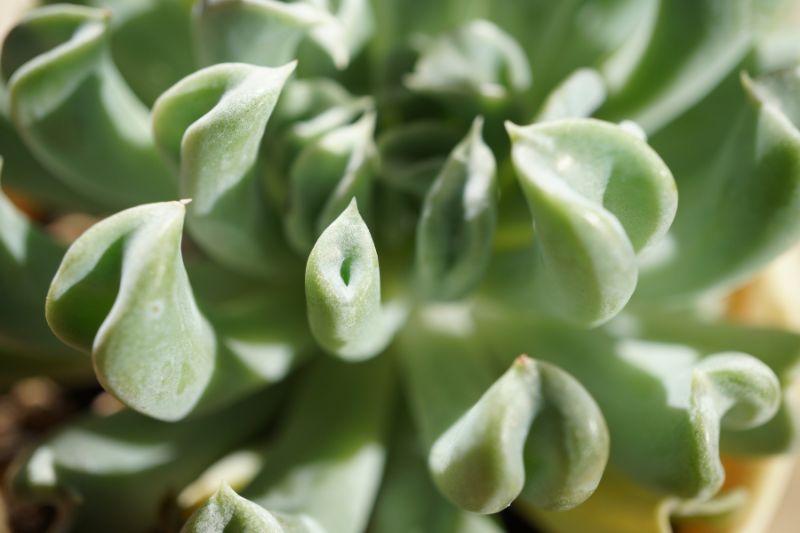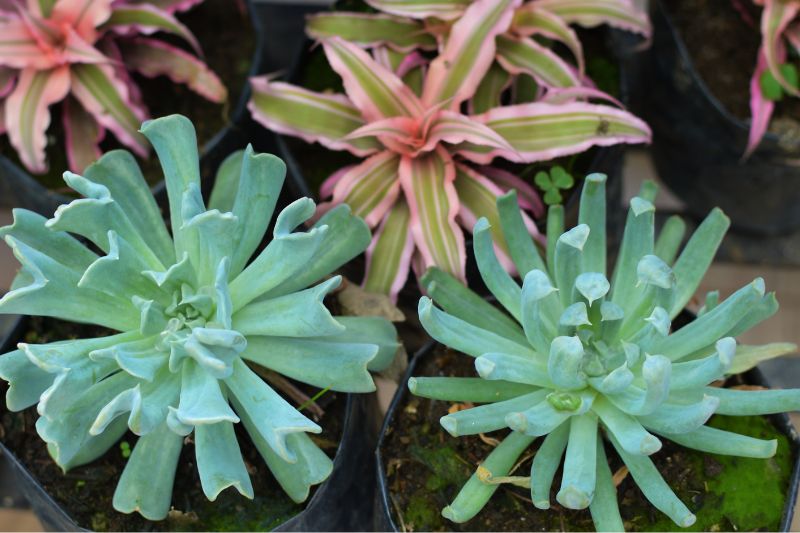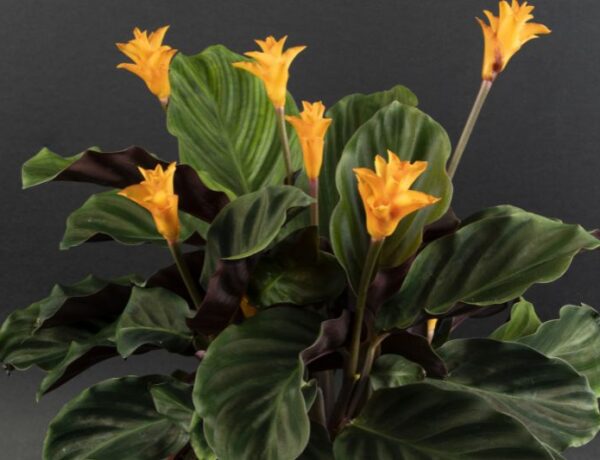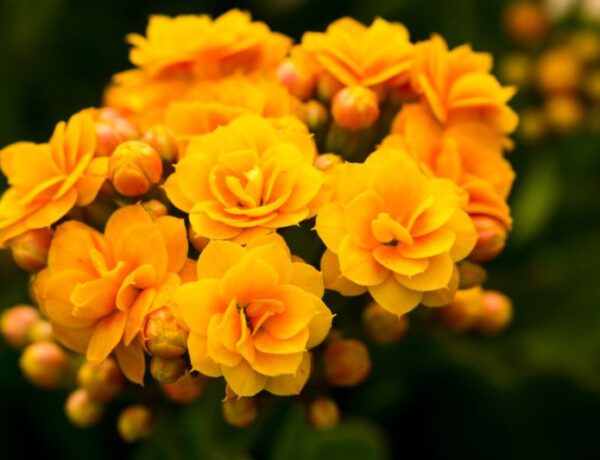The Twisting Succulent Rosette You’ll Love
Twisted Rosette, Tangerine Flowers
With leaves that twist sky-ward and late-season blooms in sherbet orange, Echeveria ‘Topsy Turvy’ turns any windowsill into a mini desert diorama.
Bred from wild E. runyonii populations in Tamaulipas, Mexico, this succulent is both photogenic and forgiving—ideal for beginners who want a plant that thrives on (benign) neglect.
Echeveria Topsy Turvy At A Glance
Native range
Tamaulipas, Mexico
Pet safety
Non-toxic to cats, dogs & people
Typical size
4–6 in tall
7–8 in wide (old clumps can reach 10–12 in)
Cold-Hardiness (USDA)
USDA 10+
Flower time
Late summer–fall
Echeveria Topsy Turvy Plant Care & Growing Requirements
Watering
Water only when the soil is bone-dry, then drench thoroughly.
Keep the rosette dry and cut winter drinks in half.
Light
Bright, direct sun 4–6 h daily; morning rays are perfect.
Acclimate slowly to prevent leaf scorch.
Soil
Use a fast-draining cactus mix or 1 : 1 : 1 potting soil / sand / perlite.
Gritty soil = zero soggy-root drama.
Temperature
Happy zone: 65–80 °F (18–27 °C); protect below 40 °F (4 °C).
Bring pots indoors before any frost hits.
Humidity
Average household humidity (≈40 %) is perfect—no misting needed.
Dry air keeps fungal issues at bay.
Fertilizer
Half-strength cactus food once a month in spring–summer.
Skip feeding during fall and winter dormancy.

Echeveria Topsy Turvy Maintenance & Propagation
Every 2–3 years, or when roots peek from the drain-hole. Handle gently—leaves snap easily.
Remove dried basal leaves and spent bloom stalks to keep pests away.
Occasional mealybugs; swipe with isopropyl alcohol or use insecticidal soap.
Arching stalks carry neon bells in late summer—enjoy, then snip to refocus energy on growth.
Echeveria Topsy Turvy Picture Gallery


Insufficient light. Move the pot to a brighter south- or west-facing window (or give it 4–6 h of direct sun outdoors). Rotate the plant weekly so every side gets equal exposure.
Only brief chills down to about 40 °F (4 °C). Prolonged freezes damage tissue. In USDA zones 9 and colder, overwinter the plant indoors or in a frost-free greenhouse.
No. ASPCA and vet databases list Echeveria species as non-toxic, though nibbling may cause mild stomach upset.
Twist off a healthy offset (pup), let the cut callus for 48 h, then place it on dry cactus mix. Mist lightly every few days until roots anchor. New growth appears in 2–4 weeks.
A half-strength cactus fertilizer once a month in spring–summer can encourage larger rosettes, but overfeeding causes weak, elongated growth. Skip feeding in the fall and winter dormancy period.
No. Removing shriveled basal leaves and spent flower stalks improves air flow and directs energy to healthy growth. Use clean tweezers or fingers to gently tug old leaves away.






No Comments